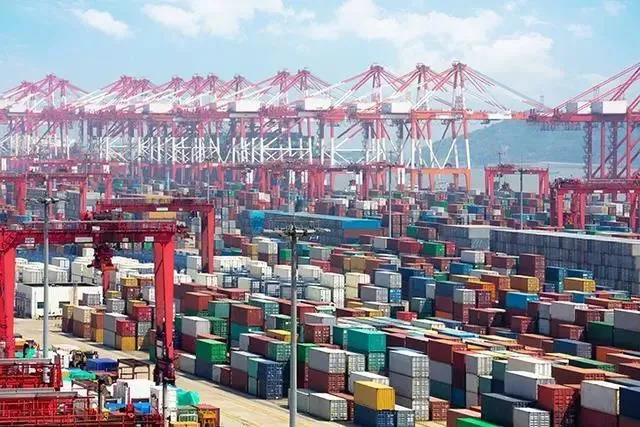US media: From Chongqing to Chicago, a difficult journey of a container
Bloomberg News, August 30, original title: From a factory in China to a supplier in Chicago Subtitle: A fertilizer container stranded on the way highlights the global supply chain crisis that hinders economic activity and raises costs.
In a corner of the world's busiest Shanghai port, a container full of fertilizers is sitting in tens of thousands of containers, waiting to board a ship to the United States. Trapped by the typhoon that has exacerbated the major congestion of the global supply chain network and Covid-19 pandemic, it has been stranded at the terminal for several months. Shipping delays have extended the delivery time, which usually takes only a few weeks, to more than half a year.
As the pandemic rages, many containers around the world have been stranded in ports, railway yards and warehouses for a long time. Delays in the transportation of each container increase costs for consumers and make it more challenging to bring corn to the table or to give gifts on holidays.
This is also one of the lessons from the chain effect of the global supply chain, showing the limitations of diversification, because all supply networks are still closely connected with China. Tiula, head of the U.S.-based procurement industry group, said: “All roads lead to China, and this has a major impact on the entire supply chain.”
The journey of this box of ammonium phosphate fertilizer began in February this year. At that time, a supplier of agricultural supplies in Illinois, the agricultural hinterland of the Midwestern United States, placed an order for eight containers of fertilizer from a factory in China.
The director of the logistics company responsible for coordinating the transportation of these fertilizers said that before the pandemic, similar goods can usually arrive in Chicago (Illinois) in April. But until May, some fertilizers remained in Chongqing, the production area 2,400 kilometers west of Shanghai. The culprit: lack of empty containers. It took several months for the logistics company to find usable containers and to find locations for them on several cargo ships bound for Shanghai.

Sailing along the busiest inland waterway in China for 8 days, these containers were lucky enough to be transported to Shanghai before the typhoon season. However, due to the soaring freight rates of the international and Yangtze River routes, the cargo that avoided the flood disaster failed to avoid high transportation costs.
Even if these containers eventually board a cargo ship bound for the United States, when they reach the coast of North America safely, there are more headaches waiting for them. For more than half a year, the largest trade gateway between the United States and Asia has been blocked by the largest number of inbound container ships. Earlier this month, 35 freighters were waiting for berths outside the ports of Los Angeles and Long Beach, California. Due to the port blockage, many ships are being diverted to the Port of Vancouver.
Next is the inland journey. Whether it is by rail or road, this container may take another one to three months to reach Chicago from the US West Coast port. For anyone engaged in global trade business, container trapping seems to be the most terrible nightmare.



















